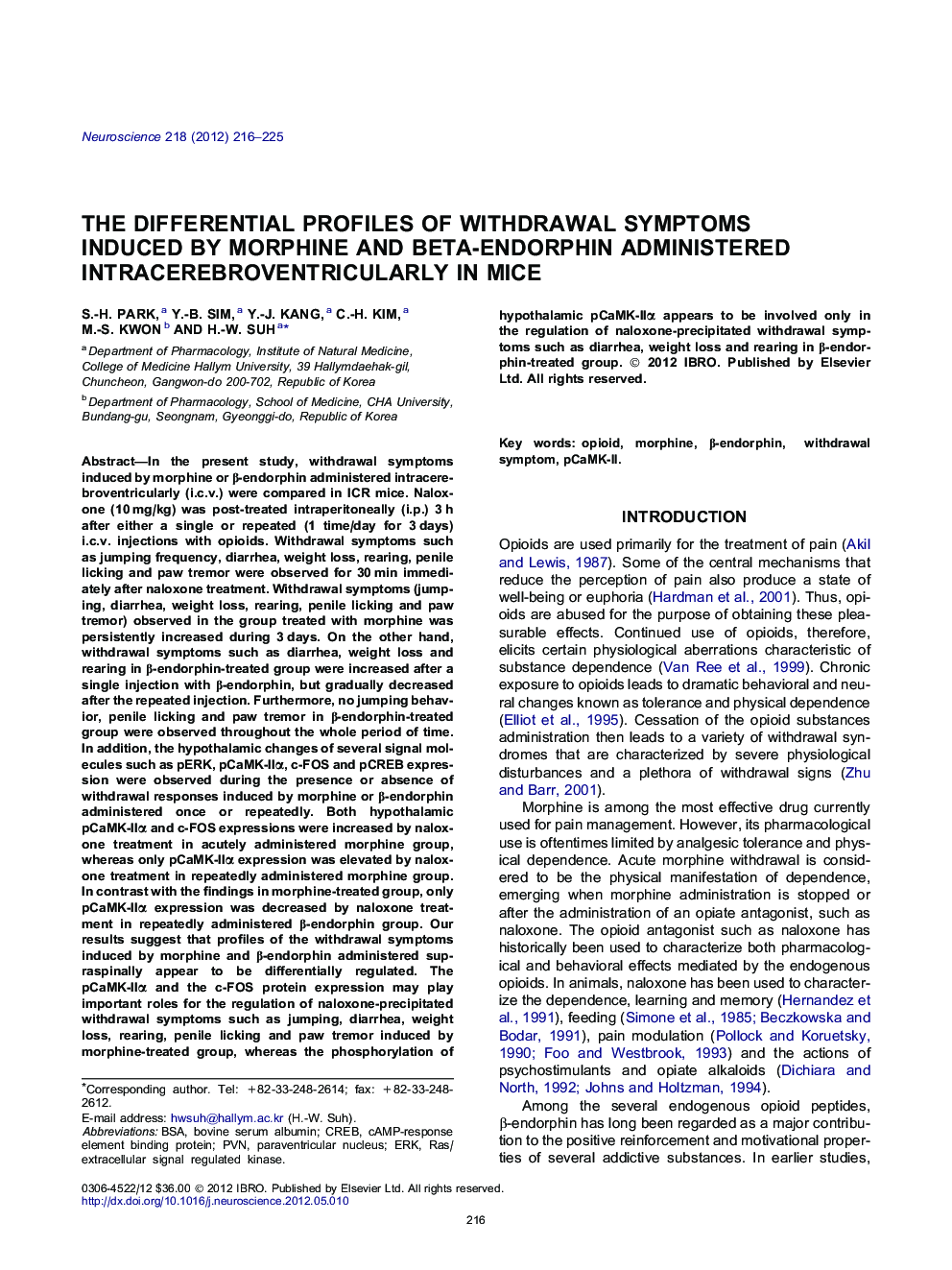| کد مقاله | کد نشریه | سال انتشار | مقاله انگلیسی | نسخه تمام متن |
|---|---|---|---|---|
| 6275560 | 1614858 | 2012 | 10 صفحه PDF | دانلود رایگان |

In the present study, withdrawal symptoms induced by morphine or β-endorphin administered intracerebroventricularly (i.c.v.) were compared in ICR mice. Naloxone (10 mg/kg) was post-treated intraperitoneally (i.p.) 3 h after either a single or repeated (1 time/day for 3 days) i.c.v. injections with opioids. Withdrawal symptoms such as jumping frequency, diarrhea, weight loss, rearing, penile licking and paw tremor were observed for 30 min immediately after naloxone treatment. Withdrawal symptoms (jumping, diarrhea, weight loss, rearing, penile licking and paw tremor) observed in the group treated with morphine was persistently increased during 3 days. On the other hand, withdrawal symptoms such as diarrhea, weight loss and rearing in β-endorphin-treated group were increased after a single injection with β-endorphin, but gradually decreased after the repeated injection. Furthermore, no jumping behavior, penile licking and paw tremor in β-endorphin-treated group were observed throughout the whole period of time. In addition, the hypothalamic changes of several signal molecules such as pERK, pCaMK-IIα, c-FOS and pCREB expression were observed during the presence or absence of withdrawal responses induced by morphine or β-endorphin administered once or repeatedly. Both hypothalamic pCaMK-IIα and c-FOS expressions were increased by naloxone treatment in acutely administered morphine group, whereas only pCaMK-IIα expression was elevated by naloxone treatment in repeatedly administered morphine group. In contrast with the findings in morphine-treated group, only pCaMK-IIα expression was decreased by naloxone treatment in repeatedly administered β-endorphin group. Our results suggest that profiles of the withdrawal symptoms induced by morphine and β-endorphin administered supraspinally appear to be differentially regulated. The pCaMK-IIα and the c-FOS protein expression may play important roles for the regulation of naloxone-precipitated withdrawal symptoms such as jumping, diarrhea, weight loss, rearing, penile licking and paw tremor induced by morphine-treated group, whereas the phosphorylation of hypothalamic pCaMK-IIα appears to be involved only in the regulation of naloxone-precipitated withdrawal symptoms such as diarrhea, weight loss and rearing in β-endorphin-treated group.
⺠Withdrawal symptoms induced by MOR or β-END injected i.c.v. were compared in mice. ⺠Differential profiles of withdrawal symptoms induced by MOR and β-END. ⺠Profiles of the withdrawal symptoms appear to be differentially regulated.
Journal: Neuroscience - Volume 218, 30 August 2012, Pages 216-225